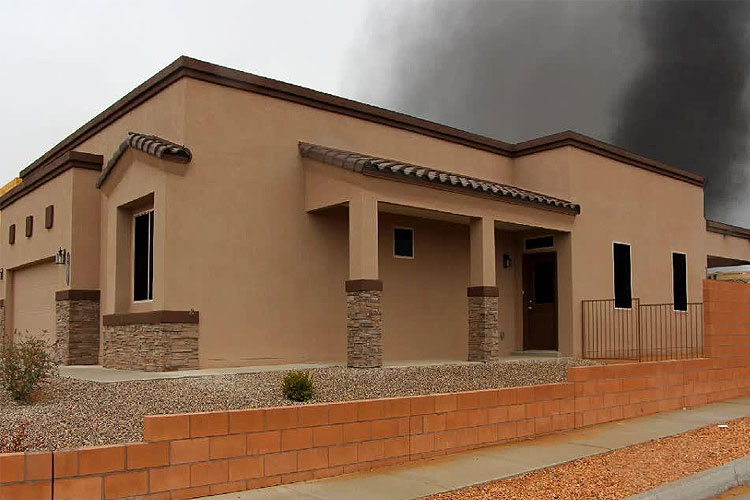

By Ted Nee
Simulations are a great tool for developing decision-making skills. They are especially effective training for “soft” skills. Soft skills are often referred to as the three Rs: Reading, Recognizing and Reacting. Reading is seeing the critical cues at an incident, things like building construction, fire dynamics, and rescue profile. Recognizing is seeing a pattern based on the critical cues observed. Finally, reacting is choosing a course of action that is likely to affect the outcome of the incident based on your prior experience with similar events. Naturalistic decision-making researcher Gary Klein describes this process as recognition primed decision making or RPMD. In order to develop these “soft skills” it is necessary to gain experience in a wide variety of incident situations. Training with incident simulations is one way to accomplish this goal.
In this house fire simulation, you are the Engine 1 officer and will be first due at the incident. You are in quarters when the following dispatch comes in: “Engine 1, Engine 2, Engine 3, Ladder 1, and Battalion 1, respond to 8601 Heather Road. We have a report of a structure fire. The nearest cross street is Central Avenue.”
RELATED: Rethinking RECEO VS: Breaking Up with an Old Friend | Ventilation Limited Fire: Keeping it Rich and Other Tactics Based Off Science | Firefighting Tactics: SLICERS and DICERS | Video: John Salka, Eddie Buchanan Talk Fire Dynamics
In this simulation, I continue with the application of the SLICE-RS tactics that we applied to the three-story apartment fire last month. This month, we apply the tactics to a ventilation-limited house fire. The home is a small, single-story residence with a flat roof and no basement.
S: Size-up (paying close attention to the fire behavior indicators)
L: Locate the fire (conduct a 360 size-up with a thermal imaging camera, if available)
I: Isolate and control the flow path (limit the air available to the fire)
C: Cool from a safe location (this could be from the interior or exterior)
E: Extinguishment
R: Rescue
S: Salvage
The SLICE-RS acronym and the tactics it represents was created in response to the changing fire environment. Over the past decades, construction techniques have evolved from more traditional styles to the lightweight, energy-efficient building that we see today. Similarly, the fuel loads have moved from largely natural products to modern synthetic fuels. This has been a slow, insidious process. The result is that many of the fires that we respond to today are in a ventilation-limited (air-starved) condition upon our arrival. SLICE-RS represents one way of dealing with ventilation-limited fires that makes conditions better for any potential victims in the interior and safer for the firefighters as they make the interior stretch to the seat of the fire.
Start the house fire simulation video. You will be prompted to pause the video and give a radio report at several key points.
The first radio transmission you will provide is a standard size-up report. This radio report should include the following elements:
- Arrival on-scene
- Building area/size
- Building height (number of stories)
- Problem description
- Action being taken (assignments for the E-1 crew)
- Assume and name command
- Any resource needs
At the next point, you are asked to pause the video you are prompted to give a 360 follow-up report. This report should include:
- Presence or absence of a basement
- The number of stories from Side C if different from initial size-up
- Any immediate life safety or rescue needs
- Incident problems or location if different from the initial size-up
You will be prompted to pause the video and make an assignment when additional units report on scene. Practice giving assignments using the task, location, objective (TLO) format. An example assignment might be: “Ladder 1, pull a second handline from Engine 1, (task), go to the first floor (location), get an ‘all-clear’ and check for fire extension (objective).”
When Battalion 1 arrives on scene, make a command transfer using your department’s standard command transfer process (if applicable).
Formulate conditions, actions, needs (CAN) reports for the assigned units based on the visible conditions and information provide when prompted to do so.
Finally, have Battalion 1 give an assignment to Engine 3 using the TLO format based on the CAN reports from the assigned units.
The most effective way to use the simulation is to get feedback regarding your performance (have an experienced officer or colleague critique your radio reports) and run through the simulation again, using the feedback.
More fire training simulations: http://emberly.fireengineering.com/training/fire-simulations.html
 Ted Nee is a 34-year veteran of the fire and emergency services. He joined the Albuquerque (NM) Fire Department (AFD) in 1983. He retired from the AFD at the rank of deputy chief. After his service with the AFD Ted served as the lead command instructor and command training center coordinator for the Emergency Response Organization at Sandia National Labs in Albuquerque for nine years. Ted is a Blue Card Command type IV and V Incident Commander and a Blue Card Command Instructor. Ted is currently teaching Fire Studio 6 Essentials and Advance Simulation Concepts workshops across North America. Ted is the co-author of the Fire Engineering DVD “Fire Dynamics” along with Dan Madrzykowski of the Underwriters Laboratories Firefighter Safety Institute and Lieutenant John Ceriello of the Fire Department of New York.
Ted Nee is a 34-year veteran of the fire and emergency services. He joined the Albuquerque (NM) Fire Department (AFD) in 1983. He retired from the AFD at the rank of deputy chief. After his service with the AFD Ted served as the lead command instructor and command training center coordinator for the Emergency Response Organization at Sandia National Labs in Albuquerque for nine years. Ted is a Blue Card Command type IV and V Incident Commander and a Blue Card Command Instructor. Ted is currently teaching Fire Studio 6 Essentials and Advance Simulation Concepts workshops across North America. Ted is the co-author of the Fire Engineering DVD “Fire Dynamics” along with Dan Madrzykowski of the Underwriters Laboratories Firefighter Safety Institute and Lieutenant John Ceriello of the Fire Department of New York.
Ted Nee will be presenting the workshop “Training with Incident Simulations” on Tuesday, April 25, 2017 at 0800 at FDIC International.

